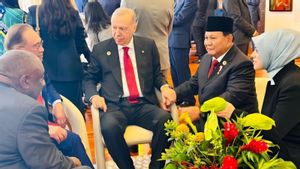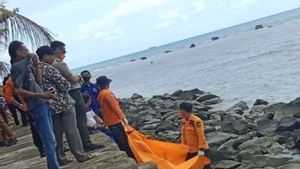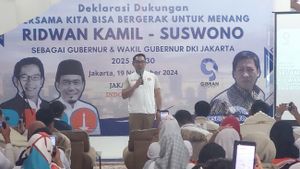JAKARTA - The Indonesian Poltracking national survey institute dissects the electoral political power of presidential candidates (candidates) on the island of Java. As a result, Ganjar Pranowo leads in Central Java and East Java. While Anies Baswedan excels in West Java, DKI Jakarta and Banten. Executive Director of Poltracking Indonesia Hanta Yuda AR said that the simulation of the 3 strongest presidential candidates in DKI Jakarta, Anies Baswedan's electability leads with 49.6 percent. Followed by Ganjar Pranowo with 27.5 percent, and Prabowo Subianto 15.7 percent. Meanwhile in Banten, Anies Baswedan is still at the top with 47.6 percent. Followed by Prabowo Subianto with 28.5 percent, and Ganjar Pranowo with 16.1 percent.
While in West Java, Anies Baswedan's electability still dominates with 36.3 percent, Prabowo Subianto to 30.8 percent, and Ganjar Pranowo 18.7 percent. "In Central Java, in the simulation of the 3 strongest presidential candidates, Ganjar Pranowo's electability was 71.4 percent, Prabowo Subianto 10.8 percent, and Anies Baswedan 9.0 percent. Then in East Java, Ganjar Pranowo 36.1 percent, Prabowo Subianto 25.5 percent, and Anies Baswedan 19.6 percent," said Hanta Yuda. Hanta explained that the electability provides an overview that in Jakarta and Banten, Anies Baswedan is relatively higher than 19 percent in addition to other candidates. While in West Java, Anies Baswedan is relatively competitive, only 6 percent adrift of Prabowo Subianto. "Meanwhile, in East Java, Ganjar Pranowo is 11 percent adrift with Prabowo Subianto. While in Central Java, Ganjar Pranowo has a very significant electability gain, 60 percent adrift of other candidates," explained Hanta Yuda. "For information, Poltracking Indonesia conducts surveys in 5 provinces on Java Island, namely in DKI Jakarta, Banten, West Java, Central Java, and East Java. The survey was held on November 26 December 2' December 2022 using the multistage random sampling method. The number of samples in each province is 1000 respondents with a margin of error +/- 3.1 percent in each province and a confidence level of 95 percent.
This survey cluster reaches all districts/cities in each province proportionally based on data on the last voter population. While the stratification of this survey is the proportion of voter gender. Data collection is carried out by trained interviewers through face-to-face interviews with questionnaires who have been randomly selected. Each interviewer interviewed 10 respondents for each elected village/kelurahan and was finally released today, Thursday 15 December.
The English, Chinese, Japanese, Arabic, and French versions are automatically generated by the AI. So there may still be inaccuracies in translating, please always see Indonesian as our main language. (system supported by DigitalSiber.id)













